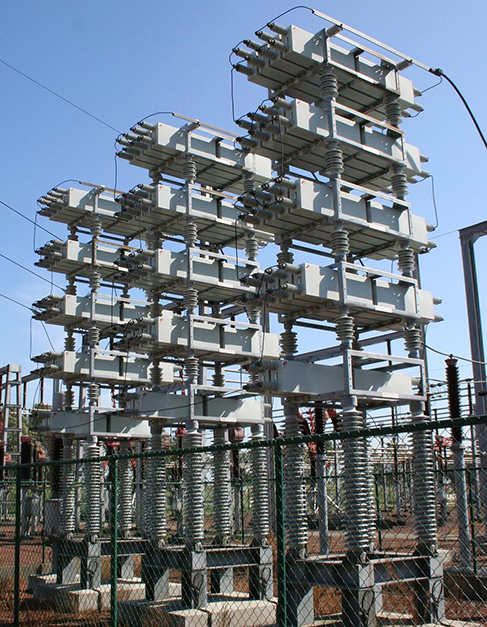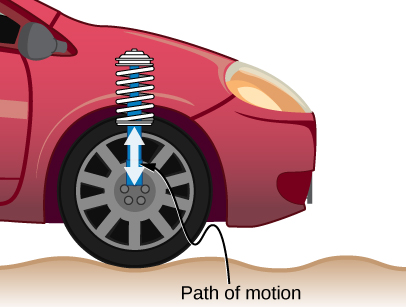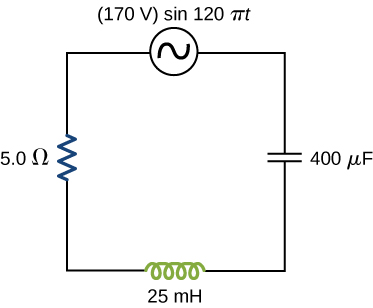| << Chapter < Page | Chapter >> Page > |

The RLC circuit is analogous to the wheel of a car driven over a corrugated road ( [link] ). The regularly spaced bumps in the road drive the wheel up and down; in the same way, a voltage source increases and decreases. The shock absorber acts like the resistance of the RLC circuit, damping and limiting the amplitude of the oscillation. Energy within the wheel system goes back and forth between kinetic and potential energy stored in the car spring, analogous to the shift between a maximum current, with energy stored in an inductor, and no current, with energy stored in the electric field of a capacitor. The amplitude of the wheel’s motion is at a maximum if the bumps in the road are hit at the resonant frequency, which we describe in more detail in Resonance in an AC Circuit .

To analyze an ac circuit containing resistors, capacitors, and inductors, it is helpful to think of each device’s reactance and find the equivalent reactance using the rules we used for equivalent resistance in the past. Phasors are a great method to determine whether the emf of the circuit has positive or negative phase (namely, leads or lags other values). A mnemonic device of “ELI the ICE man” is sometimes used to remember that the emf (E) leads the current (I) in an inductor (L) and the current (I) leads the emf (E) in a capacitor (C).
Use the following steps to determine the emf of the circuit by phasors:
Check Your Understanding Find the voltages across the resistor, the capacitor, and the inductor in the circuit of [link] using as the output of the ac generator.
In an RLC series circuit, can the voltage measured across the capacitor be greater than the voltage of the source? Answer the same question for the voltage across the inductor.
yes for both
What is the impedance of a series combination of a resistor, a capacitor, and a capacitor at a frequency of 2.0 kHz?
A resistor and capacitor are connected in series across an ac generator. The emf of the generator is given by where , and . (a) What is the impedance of the circuit? (b) What is the amplitude of the current through the resistor? (c) Write an expression for the current through the resistor. (d) Write expressions representing the voltages across the resistor and across the capacitor.
a. ; b. 0.16 A; c. ; d. ;
A resistor and inductor are connected in series across an ac generator. The emf of the generator is given by where and also, and (a) What is the impedance of the circuit? (b) What is the amplitude of the current through the resistor? (c) Write an expression for the current through the resistor. (d) Write expressions representing the voltages across the resistor and across the inductor.
In an RLC series circuit, the voltage amplitude and frequency of the source are 100 V and 500 Hz, respectively, an and (a) What is the impedance of the circuit? (b) What is the amplitude of the current from the source? (c) If the emf of the source is given by , how does the current vary with time? (d) Repeat the calculations with C changed to
a. ; b. 0.15 A; c. ; d. , 0.092 A,
An RLC series circuit with , and is driven by an ac source whose frequency and voltage amplitude are 500 Hz and 50 V, respectively. (a) What is the impedance of the circuit? (b) What is the amplitude of the current in the circuit? (c) What is the phase angle between the emf of the source and the current?
For the circuit shown below, what are (a) the total impedance and (b) the phase angle between the current and the emf? (c) Write an expression for

a. ; b. ; c.

Notification Switch
Would you like to follow the 'University physics volume 2' conversation and receive update notifications?